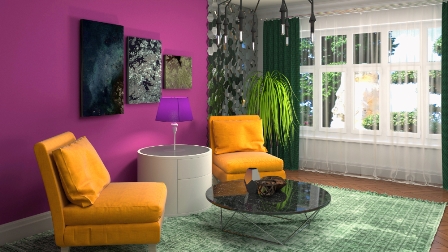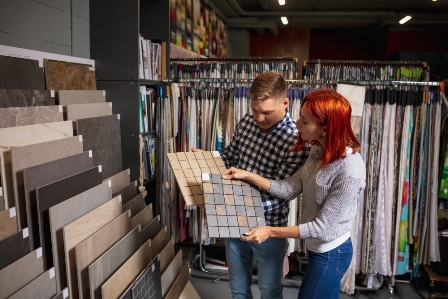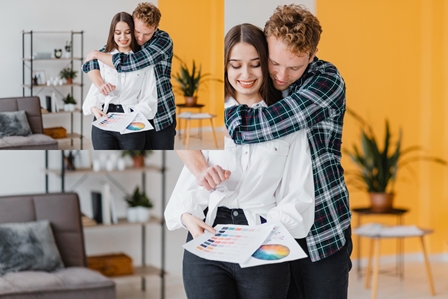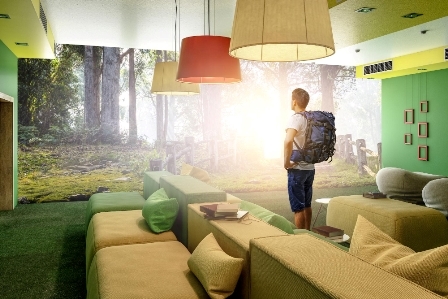In the world of design, the interior is the canvas where creativity and functionality converge. Keeping abreast of the latest trends in interior design is akin to navigating a dynamic landscape that continually evolves. This article delves into the captivating realm of modern interior design, exploring trends that redefine living spaces.
The Evolution of Interior Design
Interior design has come a long way from its traditional roots. The evolution is not merely stylistic; it reflects societal changes, technological advancements, and a shifting appreciation for aesthetics. We’ve transitioned from ornate and heavy designs to embrace the simplicity and functionality of modern styles.
Minimalism: Less is More
At the forefront of contemporary design is minimalism—an approach that advocates simplicity and the “less is more” philosophy. Minimalistic design seeks to create spaces free from excess, promoting a sense of calm and order. Embracing a minimalistic approach in your interiors not only cultivates a clean aesthetic but also encourages mindful living.
Biophilic Design: Bringing Nature Indoors
Biophilic design is a fascinating trend that emphasizes the connection between humans and nature. By integrating natural elements into interior spaces, such as plants, natural light, and organic materials, designers create environments that enhance well-being and productivity. This trend reflects a growing awareness of our innate affinity for nature.
Smart Homes and Tech Integration
The twenty-first century has witnessed a surge in smart home technology, and this has significantly impacted interior design. From smart lighting systems to automated home security, integrating technology has become synonymous with modern living. These innovations not only add convenience but also elevate the overall aesthetics of a space.
Bold Colors and Contrasts
In the realm of color, contemporary interior design is leaning towards bold and contrasting choices. Vibrant hues and striking color combinations are being used to make bold statements in various living spaces. Whether it’s an accent wall or a daring color scheme for an entire room, this trend injects energy and personality into interiors.
Sustainable Design Practices
The call for sustainable living extends to interior design. Homeowners and designers alike are seeking eco-friendly materials and practices to reduce the environmental impact of their spaces. From recycled materials to energy-efficient appliances, sustainability is a trend that reflects a commitment to a greener future.
Mixing Vintage with Modern
A delightful juxtaposition of old and new, the trend of blending vintage and modern elements is gaining traction. This approach allows for the creation of unique and timeless spaces that tell a story. It’s about incorporating cherished antiques alongside sleek, contemporary designs to achieve a harmonious balance.
Open Concept Living Spaces
Open floor plans continue to be a preferred choice in modern interior design. By removing walls and barriers, these designs foster a sense of spaciousness and connectivity. From kitchens flowing seamlessly into living rooms to expansive loft-style layouts, open concepts redefine the way we experience our living spaces.
Innovative Furniture Designs
Furniture design has evolved beyond mere functionality. Modern trends emphasize both form and function, with innovative pieces that serve as focal points in a room. From multi-functional furniture to pieces that double as art, the options are as diverse as the preferences of the homeowner.
Statement Lighting
Lighting is a crucial element in interior design, and contemporary trends are pushing the boundaries of conventional fixtures. Statement lighting, characterized by bold designs and unconventional materials, is making its mark. These pieces not only illuminate spaces but also serve as striking works of art.
Personalization: Making Spaces Unique
In a world of mass-produced items, the trend of personalization in interior design stands out. Homeowners are increasingly seeking ways to infuse their personality into their living spaces. Whether it’s custom furniture, unique artwork, or personalized decor, this trend celebrates individuality.
Art and Wall Decor Trends
Walls are no longer just boundaries; they are canvases waiting to be adorned. The evolving trends in wall art and decor reflect a desire for originality and expression. From oversized murals to curated gallery walls, the possibilities are endless, allowing individuals to showcase their tastes and preferences.
Textures and Patterns: Adding Depth
To create visually stimulating interiors, designers are playing with textures and patterns. Whether it’s through textured fabrics, intricate wallpapers, or patterned tiles, adding depth to a space has become a design imperative. This trend introduces tactile and visual interest, transforming rooms into multi-dimensional experiences.
Future Trends and Predictions
As we gaze into the crystal ball of interior design, one thing becomes abundantly clear—the only constant is change. The future of interior design holds a promise of innovation and adaptation, where foresight and adaptability will be the guiding lights. Let’s explore some anticipated trends that are set to redefine how we perceive and design our living spaces in the coming years.
Sustainable Innovations Take Center Stage
The eco-conscious wave is expected to intensify, with a surge in sustainable innovations. From furniture crafted from recycled materials to energy-efficient home systems, the future will see a greater emphasis on designs that minimize environmental impact.
Biophilic Design Expands Its Reach
The love affair with nature within our living spaces is set to deepen. Biophilic design, which integrates natural elements into interiors, will extend beyond just plants. Expect to see more creative use of natural light, sustainable materials, and even virtual nature experiences.
Artificial Intelligence in Interior Design
The integration of artificial intelligence (AI) is poised to revolutionize how spaces are designed. AI algorithms will analyze user preferences, lifestyle patterns, and environmental factors to suggest personalized design solutions. Smart homes will become even smarter with AI-driven design optimization.
FAQs
While there’s no set timeline, consider updating every 5-10 years to incorporate new trends without overwhelming changes.
Yes, minimalistic design can be adapted to various home styles, promoting simplicity and functionality.
Bamboo, reclaimed wood, recycled glass, and low-VOC paint are popular choices for sustainable interior design.
Yes, blending styles, such as vintage and modern, can create eclectic and visually appealing interiors.
Incorporate personalized decor, such as custom artwork, family photos, and unique accessories, to add a personal touch without major renovations.
Conclusion
In the ever-evolving landscape of interior design, embracing the latest trends is more than a stylistic choice—it’s a reflection of our evolving lifestyles, values, and aspirations. From minimalism to sustainable practices, the coolest trends in modern interior design offer a myriad of options for creating spaces that resonate with individuality and innovation.






